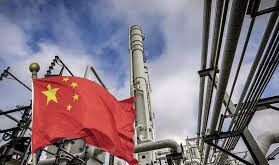Sharply weaker oil prices, the COVID-19 pandemic, and heightened geopolitical uncertainty have done little to blunt Brazil’s epic offshore oil boom. By September 2020 Brazil had soared to be the third-largest supplier of crude oil to China, the world’s second-largest economy. The scale of Brazil’s deep-water offshore oil boom is underscored by the pre-salt Tupi oilfield which for the third quarter of 2020 reached the impressive milestone of having pumped two billion barrels of accumulated oil production in the decade since commercial oil production began. A key reason for this is the rapidly growing popularity of the sweet medium crude oil grades produced from Brazil’s pre-salt oil fields, notably Tupi the world’s largest deep-water oilfield, and the Buzios field.
Petrobras, which is spearheading the development of Brazil’s vast offshore pre-salt oil fields reported record crude oil exports for September 2020 of which around 87% were bound for China. There are signs that Brazil’s offshore oil boom will continue unimpeded despite China’s oil imports slowing. Petrobras Chief Executive Roberto Castello Branco believes China has the capacity to absorb all the crude oil produced for export by Brazil, even with that output growing at a steady clip. The growing popularity of Brazil’s sweet medium grade Lula and Buzios crude oils pumped from the Tupi and Buzios fields sees them selling at a premium to Brent in China. Soaring demand for those crude oil blends is causing their price differentials to widen further, sparking speculation that they could become the world’s most expensive crude oil varieties. Petrobras is actively seeking new export markets in Asia where the demand for light sweet grades of crude oil is growing because of the push for higher quality low sulfur content gasoline, diesel, and maritime fuels. India has become a key target market. The world’s fifth-largest economy, prior to the COVID-19 pandemic, was expanding at a solid clip boasting GDP growth of up to 8% in recent years, making it the fastest-growing major economy globally. While the IMF predicts that India’s economy will contract by over 10% during 2020 it is expected to return to growth in 2021 with the IMF anticipating an impressive 8.8% annual year over year GDP growth rate. India’s solid economic growth coupled with a large, growing, and increasingly wealthy population will cause the demand for energy and fuels to rise significantly. U.S. sanctions that prevent Indian refiners from purchasing Venezuelan crude oil have forced them to look elsewhere, while the introduction of IMO2020 this year has substantially boosted demand for sweet crude oil in Asia.
The new maritime regulations also triggered a lift in demand for Brazil’s medium sweet crude oils from Singapore, which is a regional shipping hub. This rising demand for Brazil’s pre-salt sweet medium crude oil grades will be met by growing supply. Despite the COVID-19 pandemic and sharply weaker oil prices after the March 2020 price crash, Brazil’s pre-salt production is expanding. Data from Brazil’s national petroleum regulator, the National Agency for Petroleum, Natural Gas and Biofuels (ANP – Portuguese initials), shows September 2020 (in Portuguese) pre-salt oil production of almost 2.6 million barrels daily, which was 13% greater than a year earlier. That saw pre-salt oil output responsible for 89% of Brazil’s total petroleum output for the period compared to 78% for the equivalent month in 2019.
The volume of sweet medium crude oil pumped from Brazil’s pre-salt oil fields will keep expanding. Petrobras, which is responsible for over 60% of Brazil’s pre-salt oil production, is investing in ramping-up activity at its pre-salt assets, notably the Buzios oilfield. Brazil’s national oil company recently announced the $353 million purchase of the stakes of Shell and Petrogal Brasil, a subsidiary of Portugal’s Galp Energia, in the floating production storage and offloading vessel P-71. The FPSO was to be deployed in the Tupi field but Petrobras has chosen to place the vessel, which has 150,000 barrels daily of production capacity, at the Itapu oil discovery. Brazil’s national oil company expects to bring Itapu online during 2021, significantly earlier than the planned 2024 start date. For that reason, Petrobras, the owner of 65% of the Tupi oilfield, has engaged partners Shell, which has a 25% stake, and Petrogal, the owner of the remaining 10%, to design a new development plan for Tupi which will be delivered to the ANH in 2021. Tupi’s considerable potential is underscored by Galp’s belief that the deep-water oilfield has up to 20 billion barrels of oil in place. Production from the Buzios pre-salt field is growing at a rapid clip reaching an average of 604,000 barrels daily for the third quarter of 2020, or just over a third of Petrobras’ total pre-salt oil output for the period. For September 2020 alone, Buzios produced an average of 749,810 barrels of oil daily which while 1% lower than August 2020 was an impressive 84% greater than the same period during 2019. The sweet medium crude oil, which has an API gravity of 28.4 degrees, a low sulfur content of 0.31%, and low aromatics, is rapidly growing in popularity among Asian refiners. In response to this rising demand, mainly from China, Petrobras is ramping up activity in the field. Brazil’s national oil company plans to have 12 FPSOs installed in the Buzios field by 2030 which is anticipated will be pumping more than 2 billion barrels of crude daily, making it Brazil’s largest oilfield. While peak oil demand, which is expected to occur in 2030, and sharply weaker oil prices are weighing on petroleum investment, strong demand for Buzios crude oil and low breakeven costs, that are estimated to be $35 per barrel, underscore the reasons for Petrobras’ significant investment in the oilfield.
Brazil is fast shaping up to the world’s premier offshore oil boom. A combination of vast oil potential, extremely low sulfur light and medium crude oil blends, and growing demand from refiners for sweet lighter crude oil coupled with low breakeven costs makes it a highly appealing jurisdiction for investment from global energy majors. For these reasons, investment will keep flowing into Brazil’s pre-salt oil basins bolstering the Latin American country’s proven oil reserves and production despite the headwinds posed by the COVID-19 pandemic, sharply weaker oil prices, and the emergence of peak oil demand.

 Iran Energy News Oil, Gas, Petrochemical and Energy Field Specialized Channel
Iran Energy News Oil, Gas, Petrochemical and Energy Field Specialized Channel



